Pandan chiffon cake – or Bánh Bông Lan Lá Dứa – is a soft, fragrant classic loved all across Southeast Asia, from Vietnam to Singapore and beyond.
In this recipe, I’ll show you two versions: one light and airy, just like the cakes we grew up with, and another that’s a bit richer, perfect if you’re into a more Western-style sponge.

Chiffon Cake: Asia’s Fluffy Obsession
If you’ve ever stepped into a bakery in Vietnam—or anywhere in East or Southeast Asia—you’ll notice the cakes feel different. They’re light, gently sweet, and incredibly soft. That’s because we tend to favor fluff over richness when it comes to desserts.
We Asians have a real soft spot (pun intended!) for these airy sponge cakes. Think chiffon cake, Japanese cotton cheesecake, Taiwanese castella, soufflé pancakes, or the ever-gentle Ogura cake. Even in Vietnamese bakeries, Bánh Bông Lan or pandan sponge cake always steals the show. Even Asian bakeries in the U.S. carry that same love for soft, cloud-like textures.
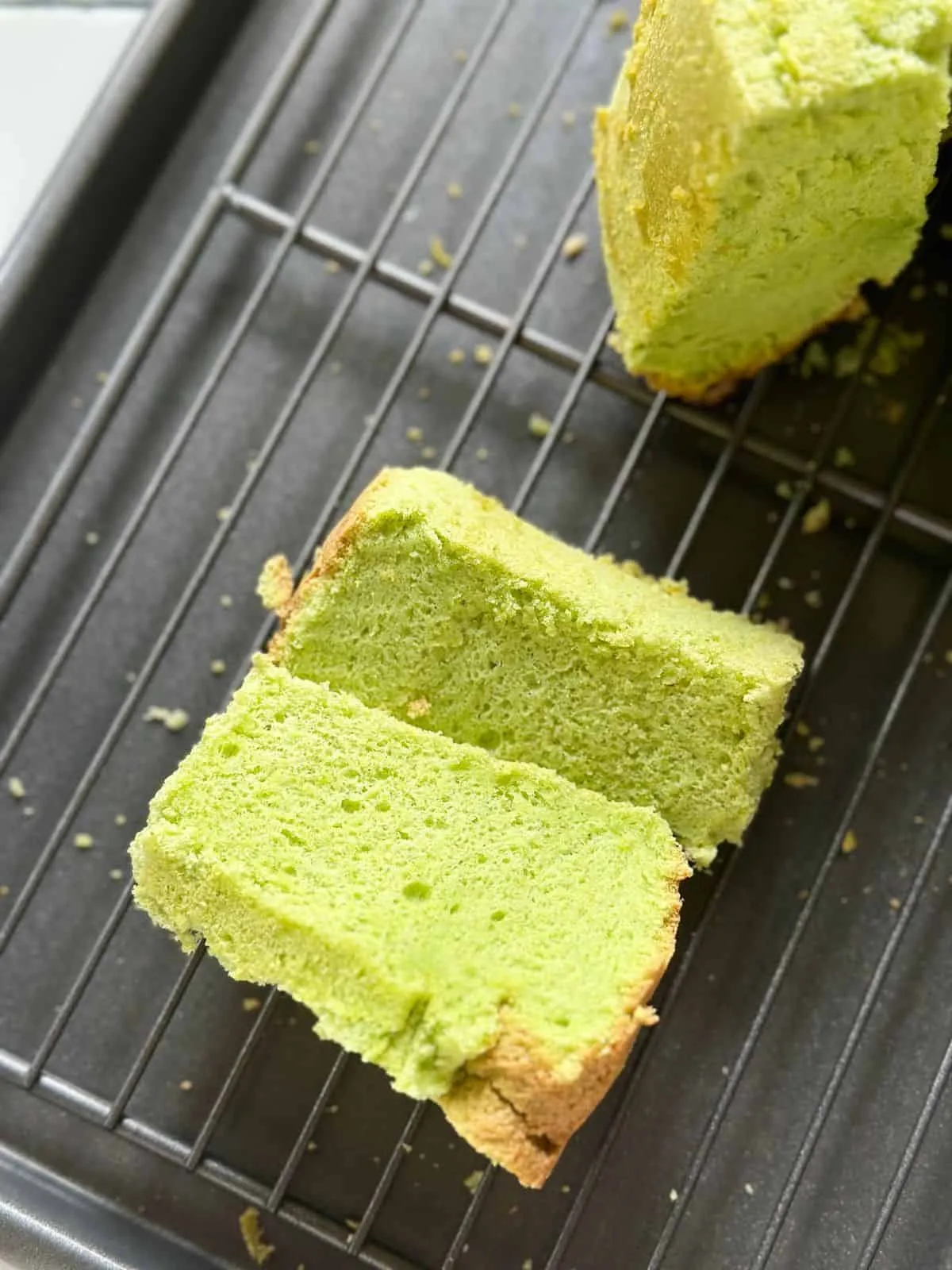
But mastering these cakes at home? It takes a little care. Unlike buttery pound cakes, chiffon cakes rely on whipped egg whites folded into the batter to create that signature lift. And the pan matters too—a proper chiffon or angel food cake pan helps it rise and stay tall. It’s a small investment, but it makes all the difference.
How I Came Up with This Pandan Chiffon Cake Recipe
Pandan has always had a special place in my kitchen. In Vietnam, it shows up in all kinds of desserts—chè, pandan waffles, pandan sticky rice, pandan honeycomb cake, pandan steamed layer cake… you name it. That fragrant green leaf is like our version of vanilla, but with a much more tropical soul.
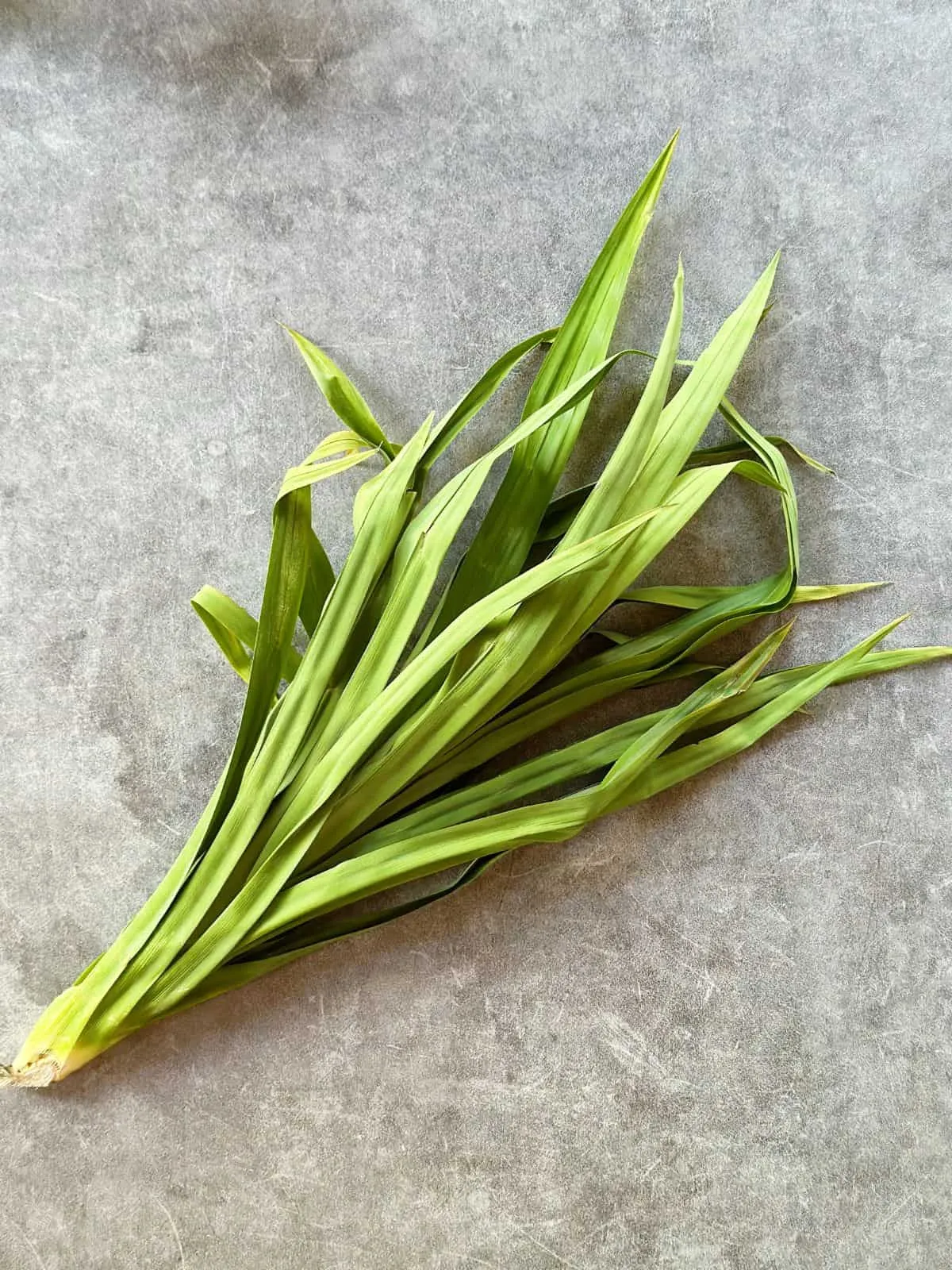
Pandan chiffon cake, though? Honestly, it wasn’t something I ate much growing up in Vietnam. It’s actually more popular in neighboring countries like Singapore, Malaysia, and Indonesia. But the first time I tried it, I was instantly hooked—so soft, fluffy, fragrant, and just sweet enough.
When I started working on this recipe, I couldn’t decide on just one version. So I made two:
- One that leans Asian-style: super fluffy and light-as-air, with less flour and more liquid.
- The other a little more Western: still soft, but slightly richer and more filling.
I love the delicate one—just a plain slice makes me happy. My German boyfriend, though, prefers the heartier version and always adds a bit of butter or whipped cream. For him, it’s basically breakfast cake. And honestly? I kind of get it.
If you love chiffon cake, you’ve got to try my Ube Chiffon Cake—light, fluffy, and full of that rich, nutty purple yam flavor.
Ingredients
A quick heads-up: chiffon cake can be a bit picky, so if you have a kitchen scale, definitely use it. Precision makes a big difference here!
- Low-gluten flour: Cake flour is perfect for this kind of soft, fluffy cake. If you can’t find either, all-purpose or self-raising flour will do in a pinch. Just remember—if you’re using self-raising flour, skip the baking powder later on.
- Cornstarch: This little addition helps reduce the gluten even more and gives your cake that lovely airy texture. Especially helpful if you’re using regular flour.
- Sugar: Granulated or caster sugar both work. This is key for whipping up a stable meringue that holds everything together.
- Cream of tartar: Helps keep the egg whites strong and stable while whipping. If you don’t have any, a splash of lemon juice, lime juice, or white vinegar works just fine.
- Eggs: Use fresh, large eggs—and separate the yolks and whites carefully. Even a drop of yolk can mess with your meringue!
- Salt: Just a pinch to bring balance and round out the sweetness.
- Baking powder: Traditional chiffon relies solely on the meringue to rise, but for my slightly richer version, a tiny bit of baking powder gives extra lift. Skip it if you’re using self-raising flour.
- Coconut milk: Full-fat coconut milk gives the cake a creamy richness and pairs beautifully with pandan. Highly recommended!
- Oil: I like using coconut oil here—it complements the pandan and coconut milk perfectly. But any neutral oil will do if that’s what you have.
- Pandan leaves: Fresh or frozen pandan leaves (check your local Asian market) bring the best, most natural flavor. Artificial extract alone tends to give a harsh taste and a neon green color that looks a bit… off.
- Pandan extract or paste: Homemade pandan extract is wonderful but takes about a day to make. For this recipe, I use a bit of pandan paste to boost the color. If you’re using store-bought extract, toss in a drop or two of yellow food coloring to soften that intense green.

Instructions
Step 1: Prep the Oven & Pandan Mixture
- Preheat your oven to 320°F (160°C) about 20 minutes before baking—chiffon cake needs a steady, even temperature.
- Blend the green parts of your pandan leaves with coconut milk until smooth. Strain through a fine sieve or cheesecloth to get that gorgeous pandan-infused coconut milk. Top it up with more coconut milk if needed to reach the right amount.
- In a bowl, mix together the pandan coconut milk, coconut oil, and pandan extract. Sift in the flour, cornstarch, and baking powder (if using). Stir well, then mix in the egg yolks until smooth and combined.
Step 2: Whip the Egg Whites into Meringue
- In a clean, dry mixing bowl (any trace of grease will ruin your meringue!), add the egg whites, 1/3 of the sugar, a pinch of salt, and cream of tartar (or a splash of lemon juice/vinegar).
- Beat on low speed, slowly adding the rest of the sugar in two batches.
- Increase to medium-high speed and whip until you reach firm peaks—the meringue should be glossy, hold its shape with a slight curl at the tip, and stay put when you flip the whisk. Stop right there—overbeating can dry it out and ruin the texture.
Step 3: Fold It All Together
- Start by folding 1/3 of the meringue into the egg yolk batter using a whisk—this helps loosen the texture.
- Switch to a spatula and gently fold in half of the remaining meringue, then fold in the rest. Be gentle to keep that airy structure—you want to lift, not stir!
Step 4: Bake & Cool
- Pour the batter into an un-greased chiffon pan from about 4 inches (10 cm) above to help pop large air bubbles. Tap the pan gently on the counter 2–3 times.
- Bake on the second-lowest rack at 320°F (160°C) for about 40 minutes. If the top browns too fast, lightly tent it with foil and keep baking.
- Once done, flip the cake pan upside down and let it cool completely in that position. This keeps it from collapsing.
- Once fully cool, gently loosen the cake from the pan.

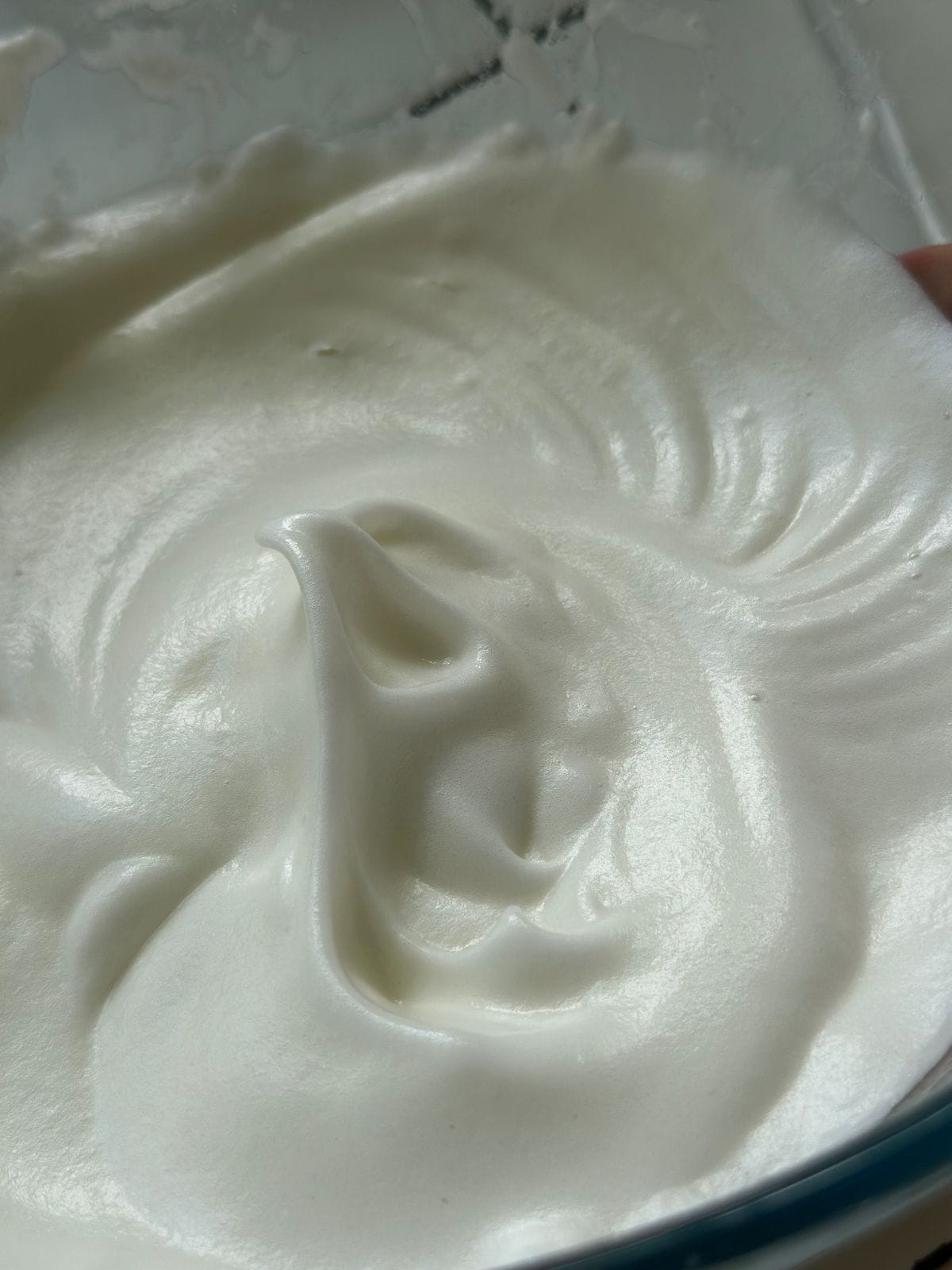
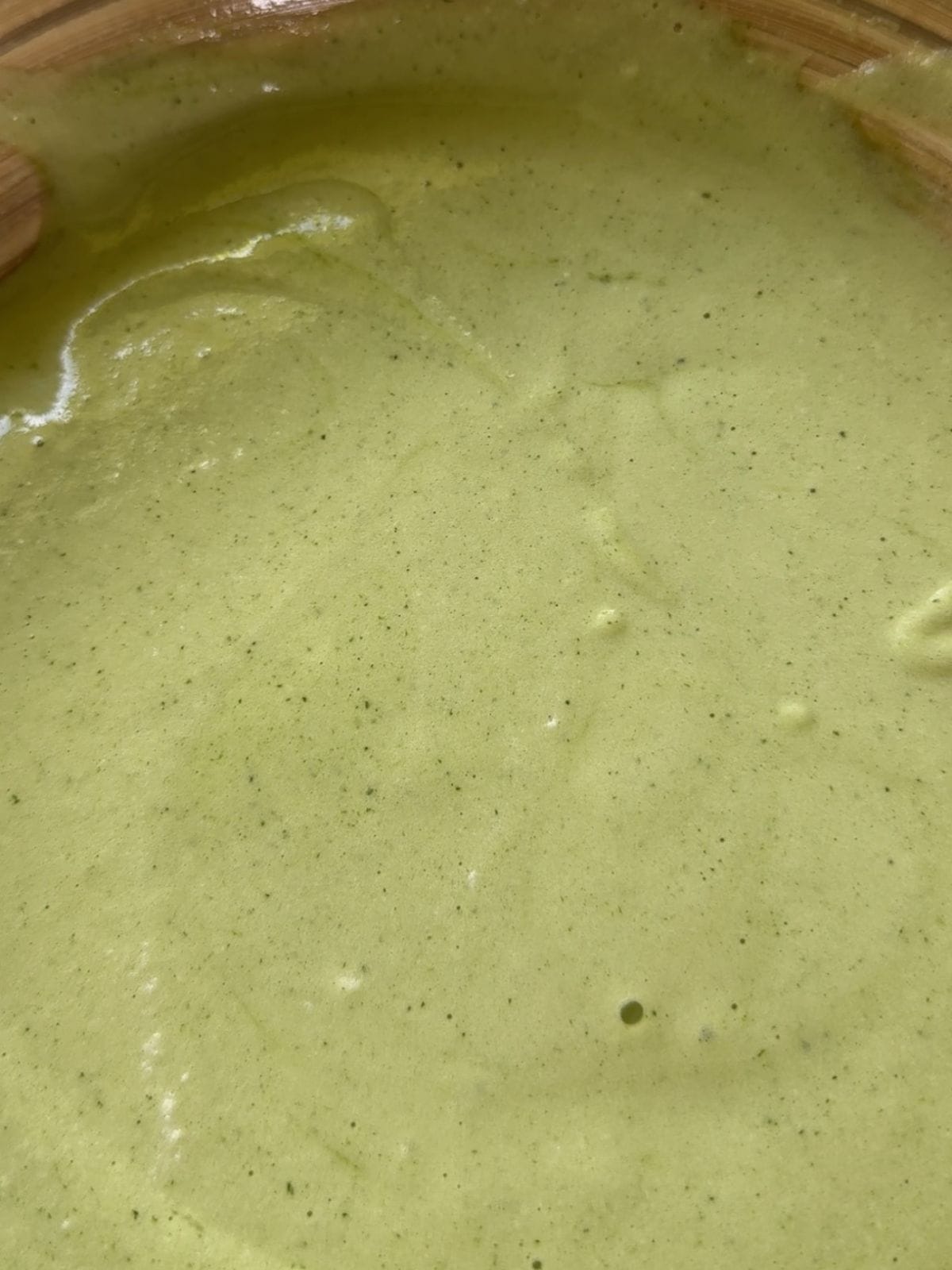
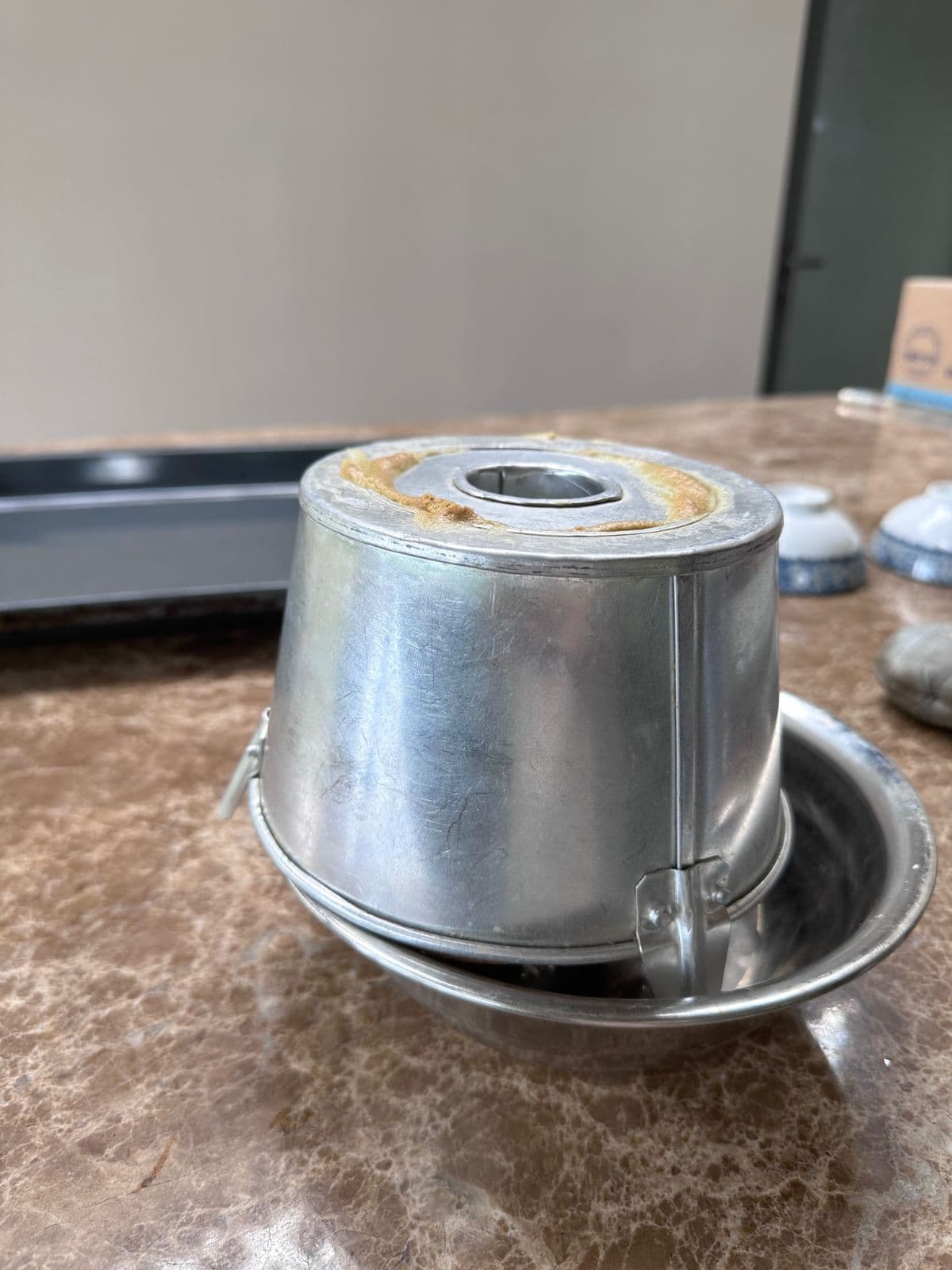
Helpful Tips

Getting the meringue and folding just right makes all the difference in a chiffon cake. Here’s what to keep in mind:
- Clean tools are a must. Make sure your bowl and whisk are completely clean and dry—no grease, no water. Even a tiny bit can stop your egg whites from whipping properly.
- Take it slow at first. Start beating the egg whites on low speed to gently build up bubbles. Once they start to foam and thicken, gradually increase the speed. You’re aiming for firm peaks—they should stand tall with a slight curl at the tip, smooth and glossy. Don’t underbeat or overbeat, or you’ll lose the structure your cake needs.
- Fold with care. When it’s time to combine the meringue with the yolk batter, go slow and be gentle. Use a light hand and fold in stages to keep the batter airy. That trapped air is what gives the chiffon cake its dreamy, fluffy texture.
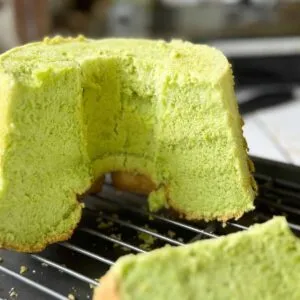
Soft & Fluffy Pandan Chiffon Cake (with Real Pandan)
Equipment
- 1 chiffon cake pan (7-8 inches / 18-20 cm in diameter) (for the Western version, a round cake pan works well too)
- 1 kitchen scale
Ingredients
Egg Yolk Mixture (Western Version, soft & hearty):
- 4 egg yolks (room temperature)
- 30 g caster sugar
- 40 g coconut oil (or corn oil/cooking oil)
- 110 g coconut milk (full-fat)
- 80 g low-gluten flour (or all-purpose flour/self-raising flour) (skip baking powder if using self-raising flour)
- 30 g cornstarch
- ½ tsp baking powder
- 6 pandan leaves (green part only)
- ¼ tsp pandan extract (optional, or use pandan leaves only)
- ¼ tsp salt
Egg Yolk Mixture (Asian Version, ultra-soft & fluffy):
- 4 egg yolks (room temperature)
- 10 g caster sugar
- 35 g coconut oil (or corn oil/cooking oil)
- 50 g coconut milk (full-fat)
- 55 g low-gluten flour (or all-purpose flour)
- 5 g cornstarch
- 4 pandan leaves (green part only)
- ¼ tsp pandan extract (optional, or use pandan leaves only)
- ¼ tsp salt
Egg White mixture
- 4 egg whites (room temperature)
- 60 g caster sugar
- ½ tsp lime/lemon juice or white vinegar (or ¼ tsp cream of tartar)
Instructions
- Prep & Pandan Mixture– Preheat the oven to 320°F (160°C) about 20 minutes before baking.– Blend the green part of pandan leaves with coconut milk, then strain to get pandan-infused coconut milk. Add more coconut milk if needed to reach the required amount.
- Make the Egg Yolk Batter– In a large bowl, mix the pandan-infused coconut milk with coconut oil.– Sift in cake flour, cornstarch, and baking powder (if using). Stir until smooth.– Add egg yolks and pandan extract (if using). Mix until well combined and silky.
- Whip the Meringue– In a clean, grease-free bowl, add egg whites, salt, cream of tartar (or vinegar/lemon juice), and 1/3 of the sugar.– Beat on low speed to build bubbles, then slowly increase speed. Add the rest of the sugar in two parts.– Beat until you get firm peaks—smooth, glossy, and standing tall with a slight curl at the tip. Avoid overbeating, or the meringue will turn dry and clumpy.
- Fold the Meringue– Gently fold 1/3 of the meringue into the yolk batter with a whisk or spatula until just combined.– Fold in the next third, then the last third. Be gentle—keep the batter light and airy.
- Bake– Pour the batter into an ungreased chiffon pan from about 4 inches (10 cm) high to pop big air bubbles.– Tap the pan gently 2–3 times on the counter.– Bake on the second-lowest rack at 320°F (160°C) for about 40 minutes.– If the top browns too quickly, loosely cover with foil and keep baking.
- Cool & Serve– Invert the cake pan immediately after baking and let it cool completely upside down.– Once fully cooled, run a knife around the edges and carefully remove the cake.– Enjoy as-is or serve with whipped cream and fresh fruit.
